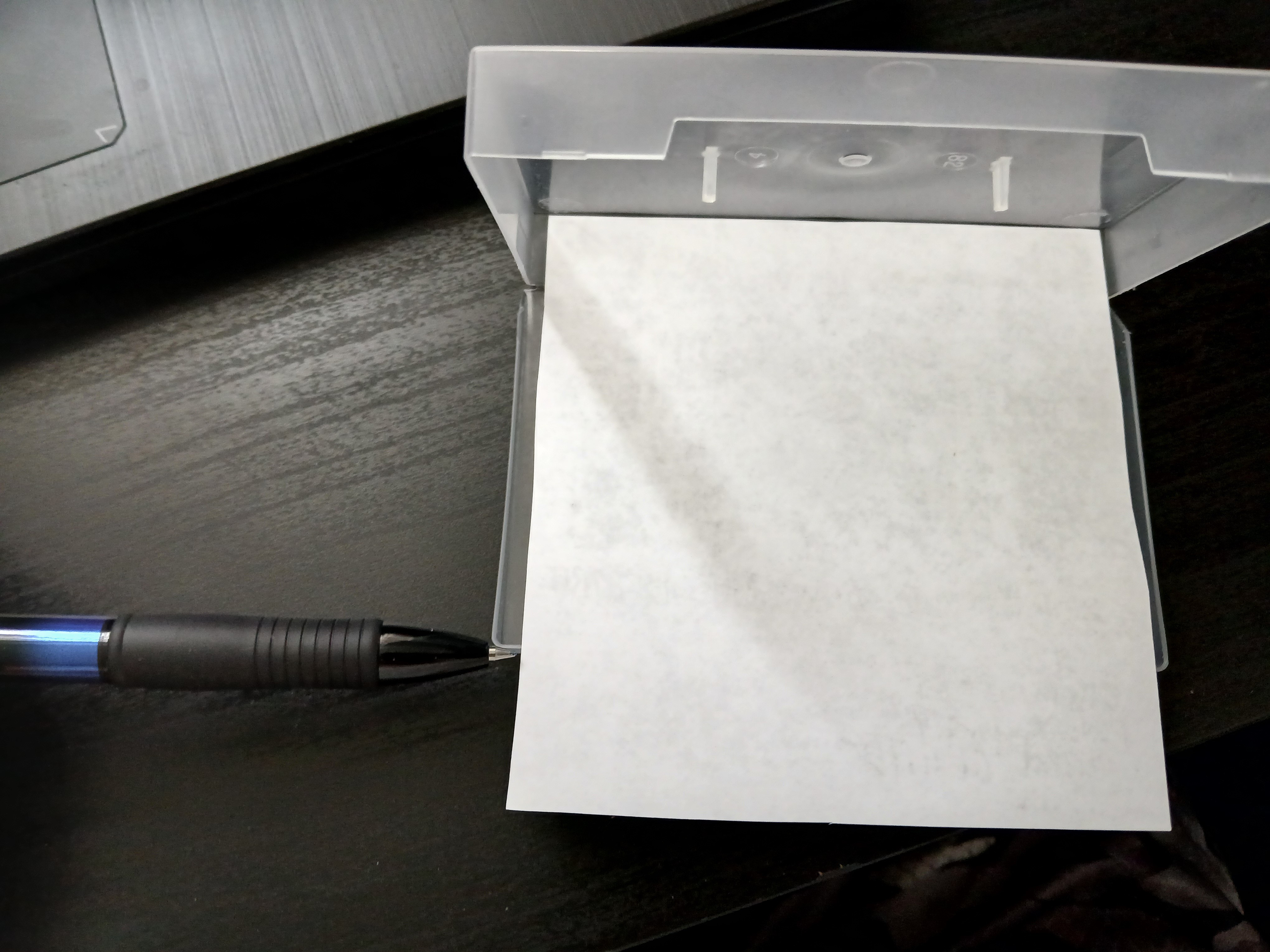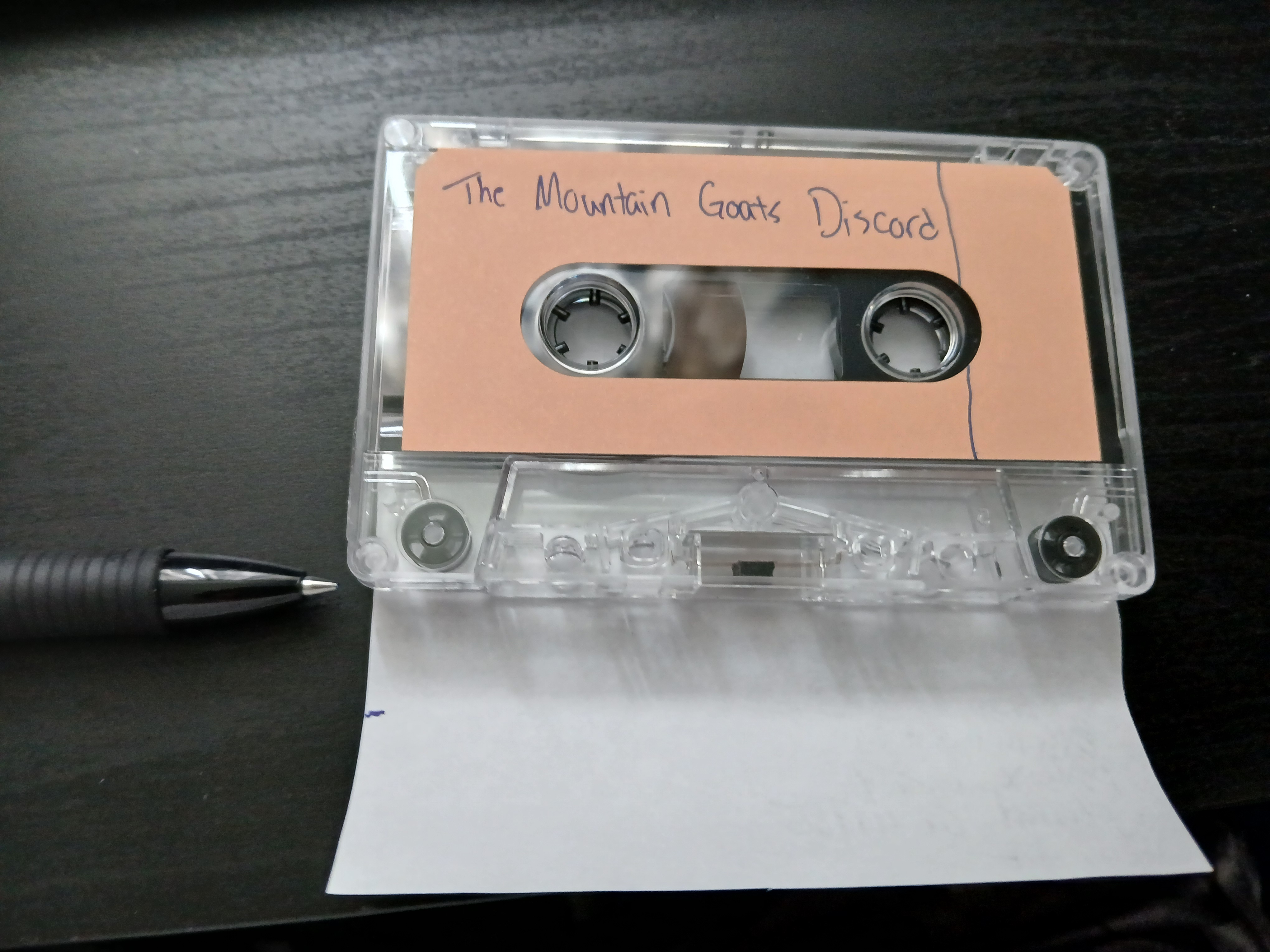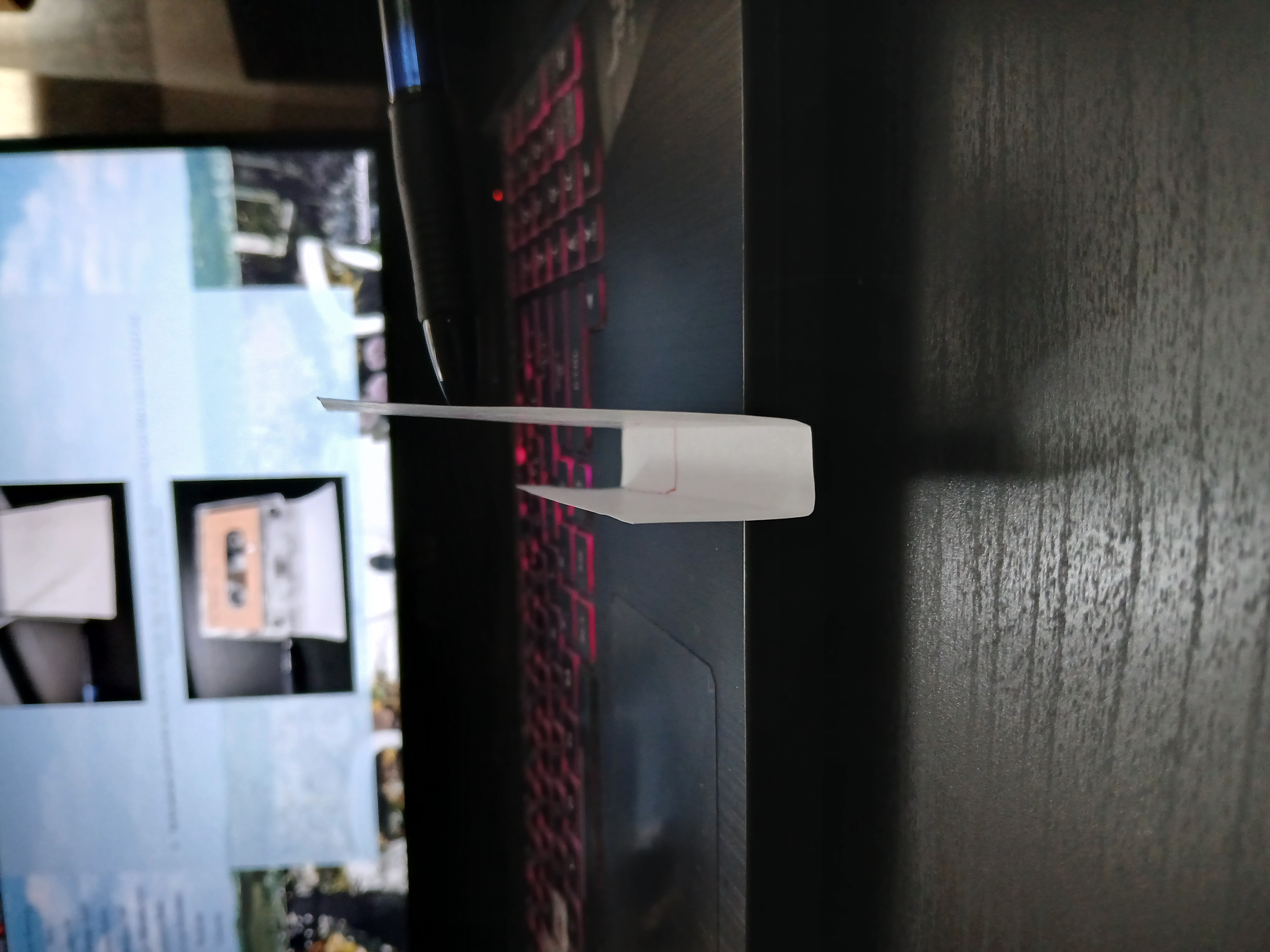The Process
- To get started, put your tape into your tape player. If you're using a line-in source, plug one side into the digital source where you'll be dubbing from (I generally use a 3.5mm to RCA splitter cable), and then plug the other end into the cassette recorder. If you're recording air to mic via vibes, play around with the position of the digital source relative to the mic of the tape recorder to make sure you're getting the sound you want.
- Ensure that the digital source is ready to play the A-side of the tape! Hit the record button on the cassette recorder and wait a few seconds. Each of these tapes' sides is designed to be 19:51 or less, so as long as you start between the 2 and 8 second mark you'll be perfect
- While the tape records, I like to shift to working on the J-Cards! I design mine in the Peter Hughes tradition. That is, I like to hand-measure each one instead of using a template. If you are a more structured person, you'll benefit from knowing that the best J-Card size is 4" by 4". If you're printing the J-Cards from the file above, they should already be formatted that way for standard 8in by 11in printer paper. Otherwise, cut out a 4in by 4in piece of index paper and insert it into the tape clamshell. Make a note of the area where you intend to be the front cover and mark it somehow.
- Flip the cover over, and start taking some measurements! You won't need to do this but it'll be helpful for blocking out where you want each feature of the J-Card to be. Insert the J-Card fully into the tape clamshell until the edge of the J-card is touching the back edge of the clamshell. Make a note on the J-Card right at the edge of the tape case, as shown below:

- For the next part, you'll need the tape (or any tape in general). Align the tape against the edge of the front of the J-Card. Make a note on the J-Card at the bottom point of the tape, as pictured below:

- Once you've got those marks done, fold the J-card on those marks and crease the edges! This will start to form that familiar J shape, and if you're working with a blank index card, will section your J-Card into 3 parts! The front cover, the spine, and the backside!

- At this point, you can start designing the cover of your tape! If you're doing so by hand, I encourage as much artistic liberty as possible! If you're printing out the J-Card, maybe consider at least coloring it in a bit with a pen or pencil to personalize it!
- Usually, by this point, the tape is about ready to flip over! If it is, switch it over and start recording again. Play side B until completion to finish dubbing!
- The last piece of the puzzle is the label (if you want your tape to have one). You can really use anything that's sticky enough to hold. The first mixtape I was ever given had that weird paper tape across the top with "MIX" written on it in big black sharpie, so the only real limit is your mind! You can also usually find sticky paper at stores like Staples.